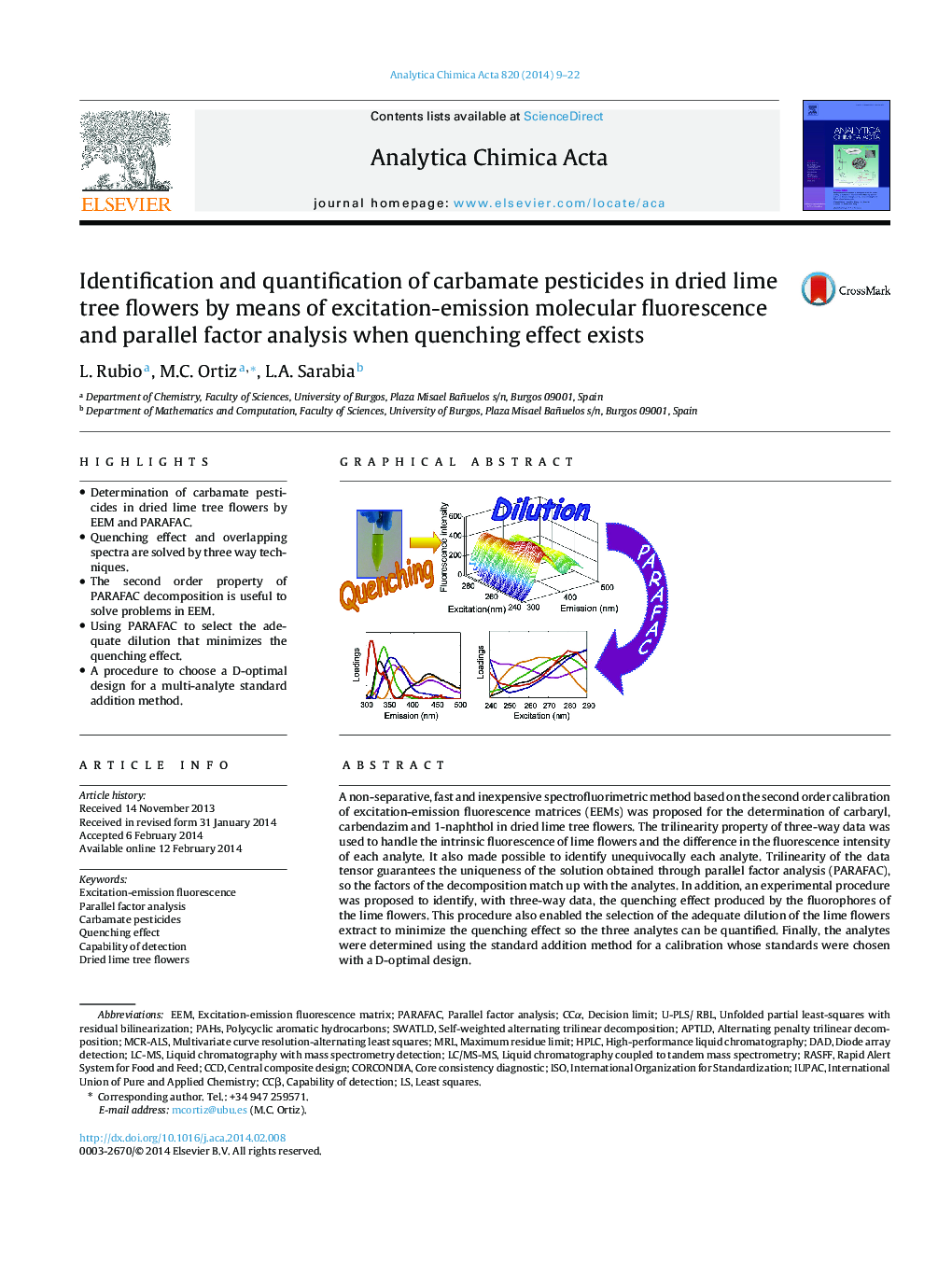| کد مقاله | کد نشریه | سال انتشار | مقاله انگلیسی | نسخه تمام متن |
|---|---|---|---|---|
| 1164195 | 1491012 | 2014 | 14 صفحه PDF | دانلود رایگان |
• Determination of carbamate pesticides in dried lime tree flowers by EEM and PARAFAC.
• Quenching effect and overlapping spectra are solved by three way techniques.
• The second order property of PARAFAC decomposition is useful to solve problems in EEM.
• Using PARAFAC to select the adequate dilution that minimizes the quenching effect.
• A procedure to choose a D-optimal design for a multi-analyte standard addition method.
A non-separative, fast and inexpensive spectrofluorimetric method based on the second order calibration of excitation-emission fluorescence matrices (EEMs) was proposed for the determination of carbaryl, carbendazim and 1-naphthol in dried lime tree flowers. The trilinearity property of three-way data was used to handle the intrinsic fluorescence of lime flowers and the difference in the fluorescence intensity of each analyte. It also made possible to identify unequivocally each analyte. Trilinearity of the data tensor guarantees the uniqueness of the solution obtained through parallel factor analysis (PARAFAC), so the factors of the decomposition match up with the analytes. In addition, an experimental procedure was proposed to identify, with three-way data, the quenching effect produced by the fluorophores of the lime flowers. This procedure also enabled the selection of the adequate dilution of the lime flowers extract to minimize the quenching effect so the three analytes can be quantified. Finally, the analytes were determined using the standard addition method for a calibration whose standards were chosen with a D-optimal design.The three analytes were unequivocally identified by the correlation between the pure spectra and the PARAFAC excitation and emission spectral loadings. The trueness was established by the accuracy line “calculated concentration versus added concentration” in all cases. Better decision limit values (CCα), in x0 = 0 with the probability of false positive fixed at 0.05, were obtained for the calibration performed in pure solvent: 2.97 μg L−1 for 1-naphthol, 3.74 μg L−1 for carbaryl and 23.25 μg L−1 for carbendazim. The CCα values for the second calibration carried out in matrix were 1.61, 4.34 and 51.75 μg L−1 respectively; while the values obtained considering only the pure samples as calibration set were: 2.65, 8.61 and 28.7 μg L−1, respectively.
Graphical AbstractFigure optionsDownload as PowerPoint slide
Journal: Analytica Chimica Acta - Volume 820, 11 April 2014, Pages 9–22
